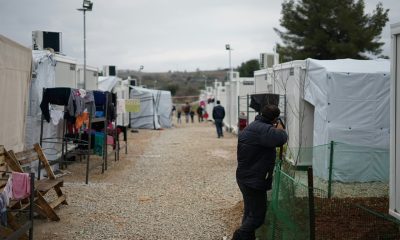Air quality
Cutting EU #GreenhouseGasEmissions: National targets for 2030

 The Effort Sharing Regulation sets national targets for cutting greenhouse gas emissions to help the EU meet its commitments under the Paris Agreement.
The Effort Sharing Regulation sets national targets for cutting greenhouse gas emissions to help the EU meet its commitments under the Paris Agreement.
What is effort sharing?
To help fight climate change, EU leaders adopted in October 2014 the 2030 climate and energy framework, which includes binding targets to cut emissions in the EU by at least 40% below 1990 levels by 2030. In sectors such as transport, agriculture, buildings and waste management the reduction will amount to 30% by 2030 compared to 2005. These sectors account for the majority of the EU’s greenhouse gases (about 60% of total EU emissions in 2014).
The targets above are also part of the EU's commitment in the Paris Agreement. To guarantee that all countries participate in the EU's efforts to reduce emissions coming from the sectors mentioned above, the Effort Sharing Decision establishes binding annual greenhouse gas emission targets for EU countries for the period 2013–2020.
MEPs are now working on a new regulation that would be the successor of the Effort Sharing Decision. The proposal lays down EU countries' minimum contributions to emission reductions for the period 2021-2030 as well as the rules for determining the annual emissions allocations and how to evaluate progress.
What are the proposed national targets?
As the capacity for cutting emissions varies by member state, this is taken into account by basing the targets on the countries' gross domestic product per capital. The resulting 2030 targets range from 0% to -40% compared to 2005 levels and are in line with the EU's general 30% reduction target.
| Member state | 2030 target compared to 2005 |
| Luxemburg | -40% |
| Sweden | -40% |
| Denmark | -39% |
| Finland | -39% |
| Germany | -38% |
| France | -37% |
| United Kingdom | -37% |
| Netherlands | -36% |
| Austria | -36% |
| Belgium | -35% |
| Italy | -33% |
| Ireland | -30% |
| Spain | -26% |
| Cyprus | -24% |
| Malta | -19% |
| Portugal | -17% |
| Greece | -16% |
| Slovenia | -15% |
| Czech Republic | -14% |
| Estonia | -13% |
| Slovakia | -12% |
| Lithuania | -9% |
| Poland | -7% |
| Croatia | -7% |
| Hungary | -7% |
| Latvia | -6% |
| Romania | -2% |
| Bulgaria | 0% |
Source: European Parliament briefing
A strategy to cut emissions will be drawn up for each EU country to make sure they decrease emissions at a constant pace throughout the period.
A safety reserve with a total of 105 million tonnes of CO2 equivalent will be created and be available in 2032. It is intended to help less wealthy EU countries reach their 2030 targets. The reserve will be accessible only if the EU attains its 2030 target and then only under strict conditions.
However, some flexibility will be possible. For example, EU countries will be able to bank, borrow and transfer annual emission allocations between each other from one year to another.
What does the Parliament propose?
To ensure long-term predictability, MEPs also propose to set a target for 2050, namely to reduce greenhouse gas emissions by 80% compared to 2005 levels.
Members also want to give better support to lower-income EU countries. Provided they have taken, or will take, action before 2020, they will be rewarded with more flexibility during the later part of the scheme
Next steps
MEPs will vote on the proposal during April's plenary session in Strasbourg.
Other initiatives to cut greenhouse gas emissions
There are two other pieces of legislation to help the EU its commitments under the Paris Agreement on climate change:
Share this article:


































